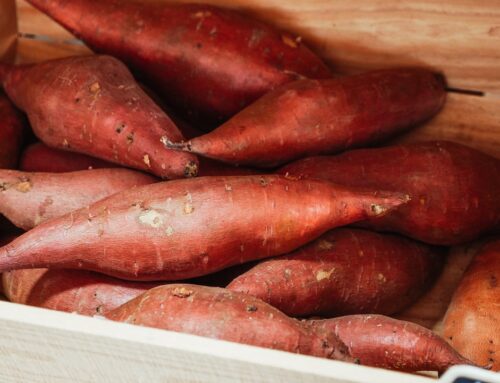
Sweet potato soil requirements
Sweet potato soil requirements are similar to many other vegetable crops. Good high quality soil is the first step towards good yields, it is not a guarantee, but it helps. The soil texture, structure and chemical composition significantly influences root growth, which is where the tubers grow. Any part of the soil that restricts root growth, will reduce total and marketable sweet potato yields.
Sweet potato is sensitive to prolonged excessive moisture or wet conditions. Conditions that are conducive to high moisture are short irrigation cycles and soils with high clay content or very fine loams. High water tables can also have a significant effect so proper drainage must applied. Some clay soils form plough banks 30cm which also restricts drainage and form a man made water table.
Sweet potato can be left in the soil for a while until marketing conditions are right, this is also called gradual marketing. The disadvantage is that the tubers can be damaged by water logging during this time.
Soil acidity
Sweet potato is sensitive to alkaline soils. So avoid soils with pHH2O above 7.5. Many arid regions in South Africa have brackish soils, which must be avoided. Although lime is a solution, the benefit vs cost must be calculated, especially with poor soils where extra fertilizer and organic material must be added to achieve acceptable yields. Add dolomitic lime in brack soils with Mg shortage.
Sweet potato soil preparation
Soil preparation is a neglected activity on 80% of small scale farms. Not by choice, but because of lack of capital for heavy machinery, crop rotation and speed of rotation and just knowledge. For instance, if lime is required, it must be applied and worked into the soil a month before planting. This is a problem if you have a crop growing and you are still harvesting.
Apply the recommended fertilizers just before planting. If you are using flood irrigation, apply the fertilizer to the ridges first as there are little roots in the furrows. You will only be feeding weeds if the fertilizer is placed in a furrow. Note that if you harvest sweet potatoes mechanically, make sure the ridges are the right width for the harvesting machine.

Remember not all soils are suitable for mechanical harvesting so consult your handbook or sales representative which soils are the most suitable on your land.
If you use sprinkler irrigation, plant the runners on 300-400mm high and 200-300mm wide ridges. Use higher ridges on heavy soils for more effective drainage from root environment. The ridges should be at least 1m apart or according the the harvesting implement (See above image).
Advice for small scale farmers without tractors.
Most small scale farmers do not have expensive tractors and implements to for soil preparation. Although there are small cheaper options on the market where you walk behind the tractor, these are 2-Wheel tractors and made in South Africa. No matter what, proper cultivation is essential for good yields. The better your soil is, the higher your yields will be. Water the planting area thoroughly and apply your fertilizer accurately. Always work in moist soils, not wet or soggy soils. A week before planting, irrigate. Once the soils is moist, ridges can be made with a spade and rake. Remove large clods and crush them.
In my next article I will discus how to plant and handle the planting material of sweet potatoes.




